
Three sisters, three types of peony, so we’ve taken one each. The most normal sister (me ..lol) will be taking you through the most commonly grown ‘herbaceous’ peonies, whilst Elaine will be cooing over her stunning collection of the more rarefied ‘tree’ peonies (whilst making us all feel a bit inadequate) and Caroline, the most horticulturally challenged, has taken on the trickiest group of ‘intersectional’ peonies, so has obviously had to ask a proper gardener for some help with her piece this week. We’ve also found a good discount for you to buy some peonies.
Herbaceous peonies ….those that disappear completely over winter to sprout up again next spring. And straightaway we come to the first answer to those killjoys who don’t grow peonies because their flowering season is so short: emerging peony shoots in March are simply gorgeous.
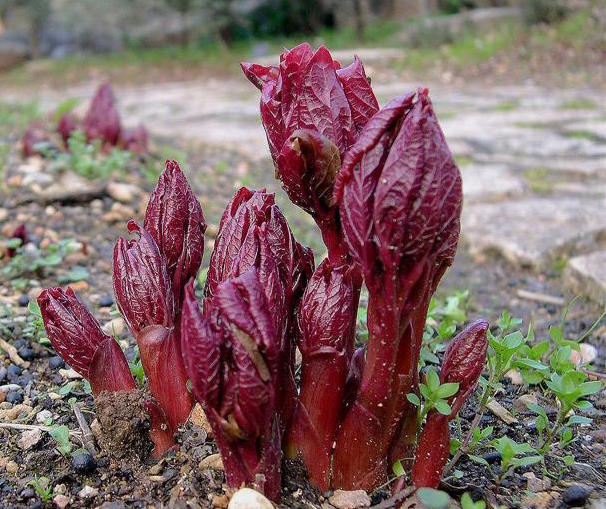
The next stage is even more intoxicating as you start to discern the plump, curvaceous buds nestled in amongst the unfolding foliage.
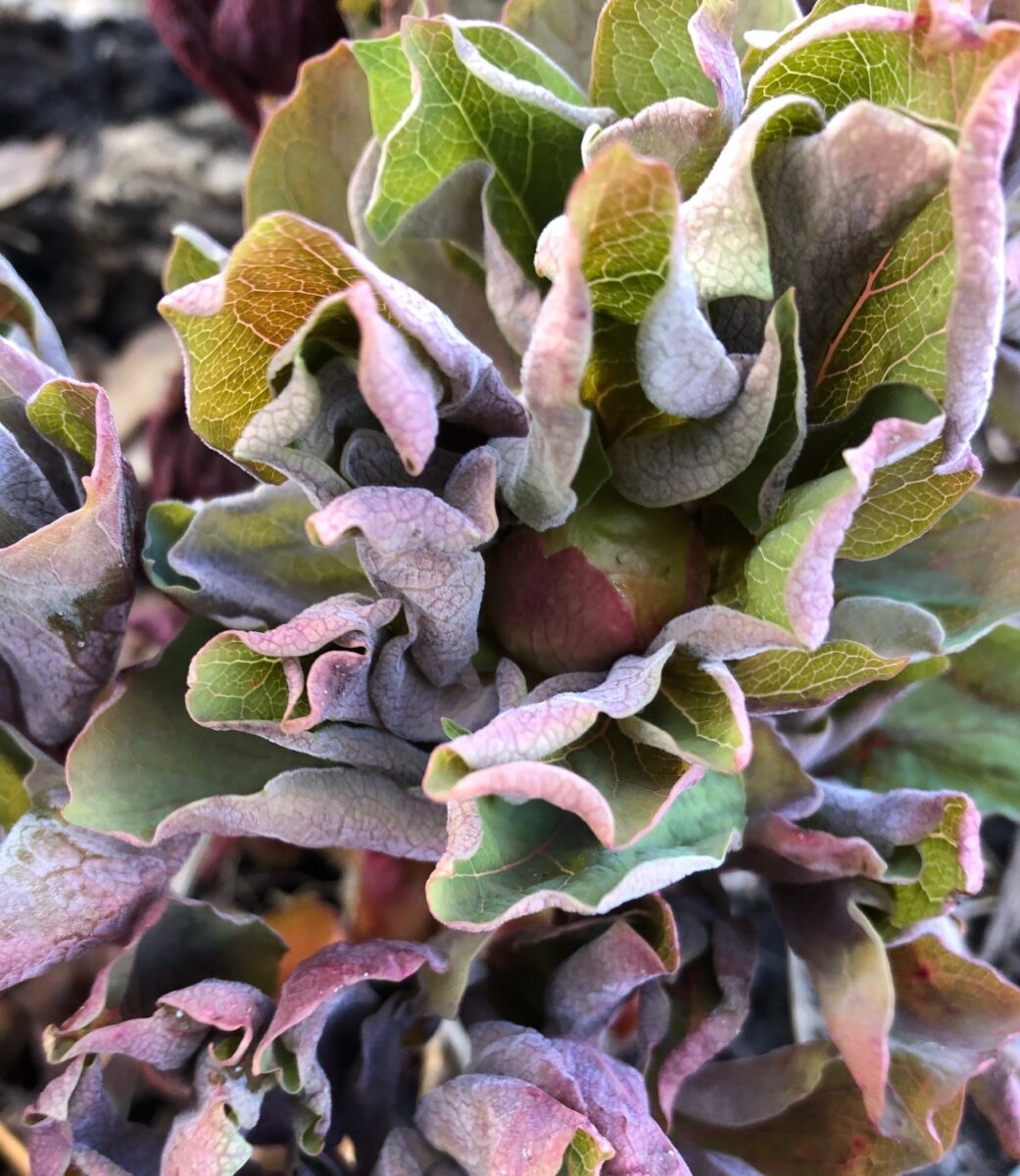
So you’ve already had three months of anticipation and sculptural beauty before the flowers arrive in early June. And here is where your personal preference comes into play. For some people a peony isn’t a peony unless it is full Barbara Cartland frothy pink, like the classic ‘’Sarah Bernhardt’ or ‘Bowl of Beauty’
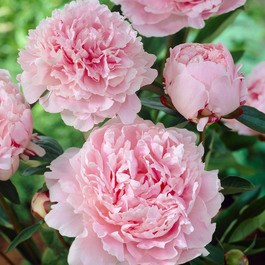
Personally I’m not a pink powder puff sort of girl, and prefer the simpler elegance in single flowers of say ‘White Wings’
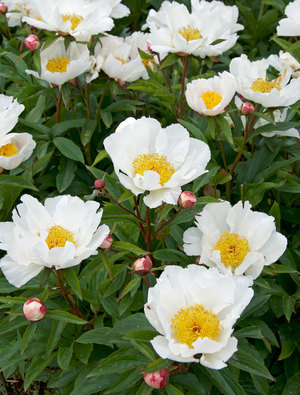
Or the more vibrant colours of some of the deep red cultivars
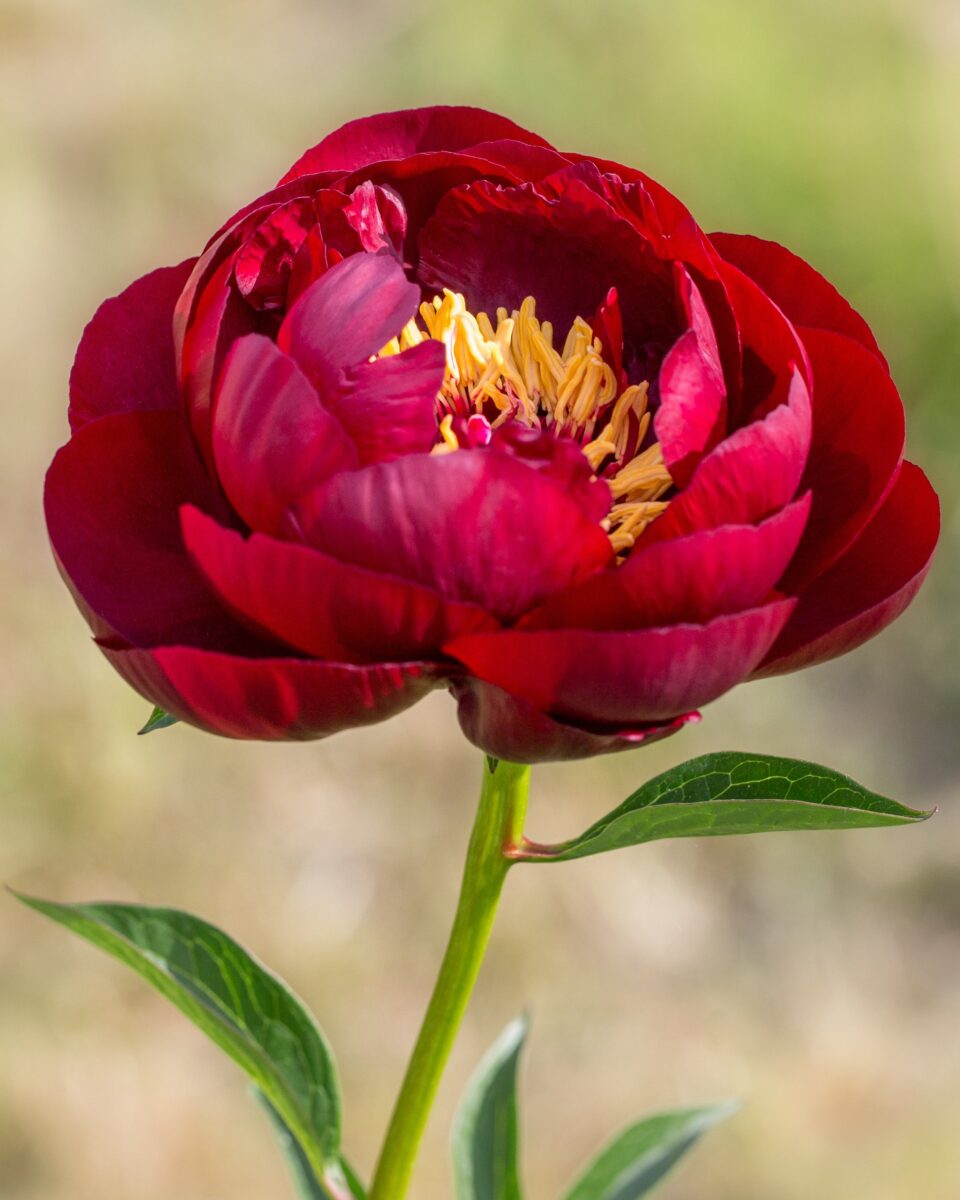
There are simply dozens of new cultivars on the market nowadays, so you really can just scroll through the choices on offer like a dating App (not that I have ever done that, you understand ….) until you find the perfect match for your own personality. One tip though is once you’ve established that they are country lovers with a GSOH, check if they also have good autumn colour or attractive seed pods as this can be the final clincher in a plant that just keeps on giving.

Tree peonies. Rarefied they might be but tree peonies are clearly happy to grow on chalk, I’m delighted to say – they certainly romp along in my near-the-seaside-at-the-end-of-the-South-Downs courtyard garden.They have the same blowsy OTT flowers of the herbaceous species but, while they do lose their leaves, they don’t disappear below ground come autumn. Indeed, they often develop quite thick branches, almost trunks, and plenty of gnarly old bits (we Growbags know what that feels like, don’t we girls? Oh, just me then.)
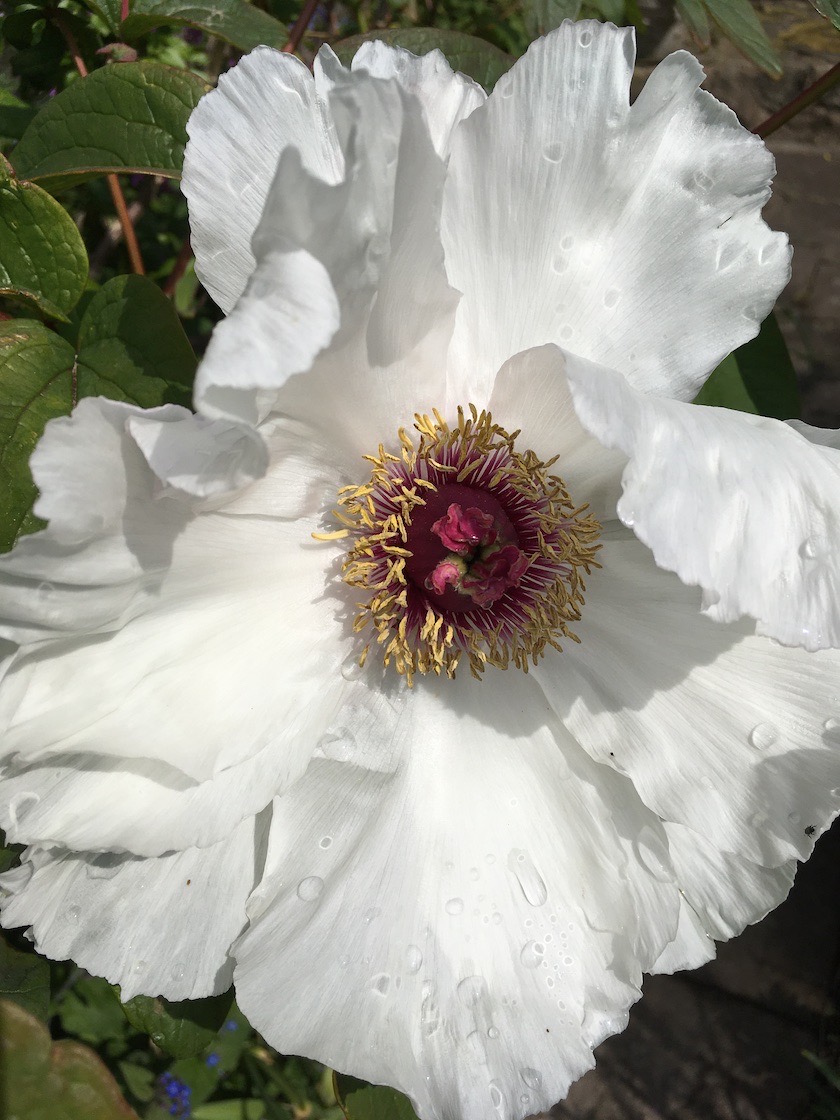
Like their herbaceous cousins tree peonies have delectable shoots in spring, usually in the plum, beetroot, bull’s blood range of hues. And the foliage that develops from them is elegantly divided or scalloped, and often suffused with colour too. It’s just as well that the leaves are lovely because by golly, the eye-waveringly gorgeous flowers don’t last long! While my Coronilla glauca bush is just entering its fourth month of FULL flower, the tree peonies will dazzle for two weeks max.
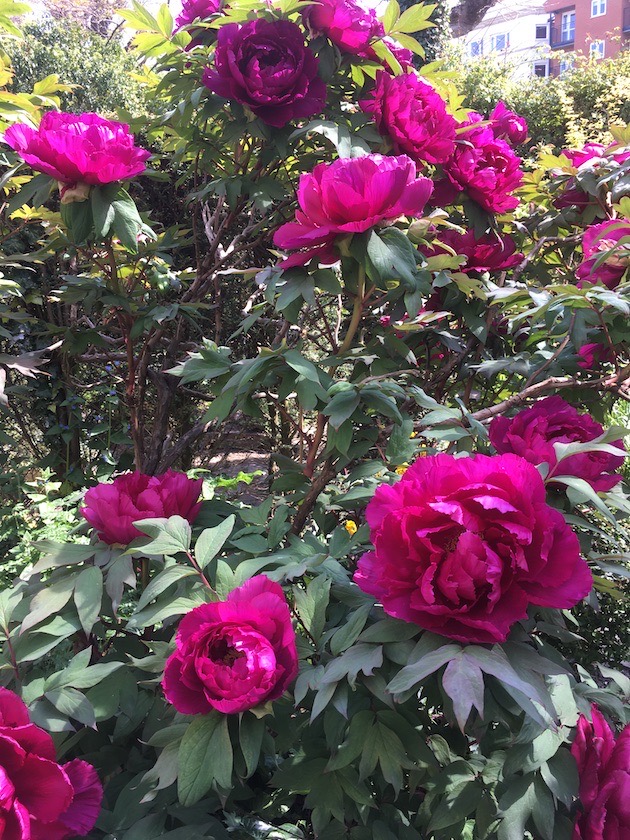
But what glory when they are out! My P. suffruticosa ‘Hana Daijin’ had 51 luscious rose-purple bowl-shaped blooms last year, each the size of a good-sized dinner plate! There are just as many fat buds this year, tempting us with slivers of colour at the moment. I have several others, some with names, some without. These plants are never cheap, but you can sometimes get bargains if you are prepared to buy unnamed varieties. I also love P. lutea, which fills a sunny corner with its lemon-yellow flowers and then bright green dissected foliage all summer.
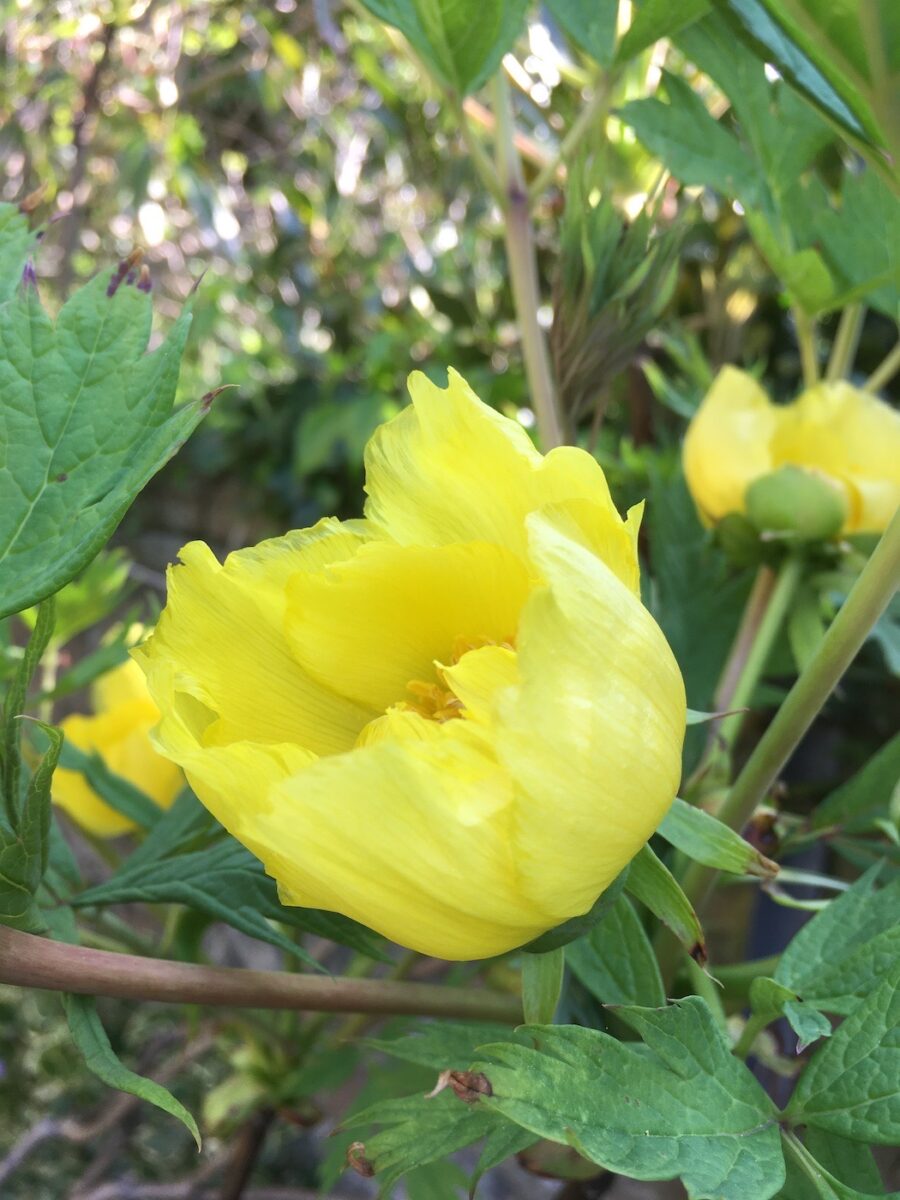

Intersectional peonies Yes although they look a little too ‘floofy’ for up here in Scotland, I’m right up for peonies. Mercy me – they actually NEED a cold winter to perform well – a good eight weeks below 15 degrees according to peony expert Alec White at Primrose Hall Peony Nursery*. My dears, we can provide any amount of this.
Yes intersectional peonies (also called Itoh peonies after the person who created them in the1940s) are a cross between herbaceous and tree peonies and have the best of all their attributes – huge blooms, finely cut foliage and a lovely tidy habit.
You get masses of flowers on mature plants, says Alec, that last twice as long as ordinary peonies, they’re extremely hardy and… no kidding, they also give you fabulous autumn colour. Add to that they live for years and don’t need staking (punch…the…air)
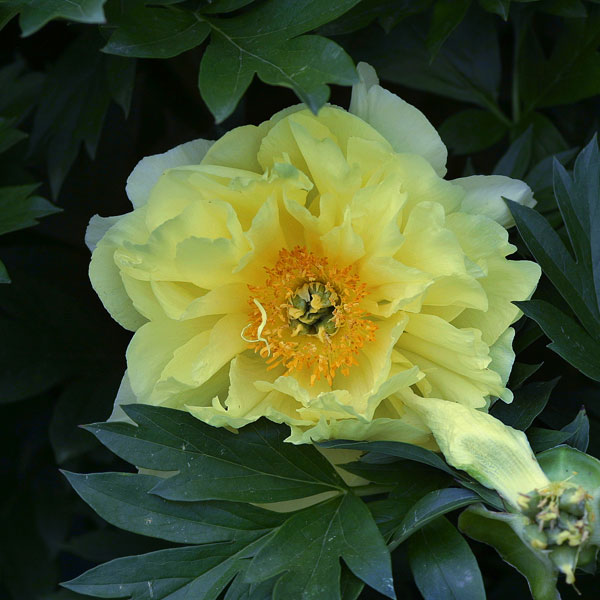
‘What’s the catch’ you cry! And cry you will, when you see the price. They’ve come down since the £70 ,000 that the first ones allegedly cost, but you’re still in for £20+ for most of them. Thankfully we spotted an offer you might just love this weekend…..
Farmer Gracy has a great offer of not only discounted bare root Buckeye Belle peonies but also several good intersectional (Itoh) ones too. On top of that, there is a free Post and Packing code (FRSH) you can use till Sunday 25 April
If you’re feeling a bit more flush, or maybe have a birthday coming up, Claire Austin’s new book ‘Peonies’ is to die for.
- * By the way, we have had quite a few enquiries in response to the advice from Martin Duncan, the Head Gardener at Arundel Castle, about rose-care. Here it is from the horse’s mouth so to speak (I have bought my Epsom salts now, and will be drenching my roses this weekend for sure….):
“I use 1 full Tablespoon of Epsom salts (Fargro do a big bag of Epsosalts) to 8 litres of water (watering can) this will do 8 roses and we water it around the rose. Water once a month from beginning April, May and June.
Planting roses I always use Mycorrhizal fungi or Root Grow, but I am sure everyone has their own methods! I soak the bare rooted roses for about 8 hours then sprinkle the Mycorrhizal over the roots and hole then plant. I avoid using bone meal whilst planting, but will add it to the roses after three months.”
*From an article in Gardens Illustrated by Alys Fowler – July 2020.
NB If you’d like a bit more gardening chit-chat from the3growbags, just enter your email address here and we’ll send you a new post every Saturday morning
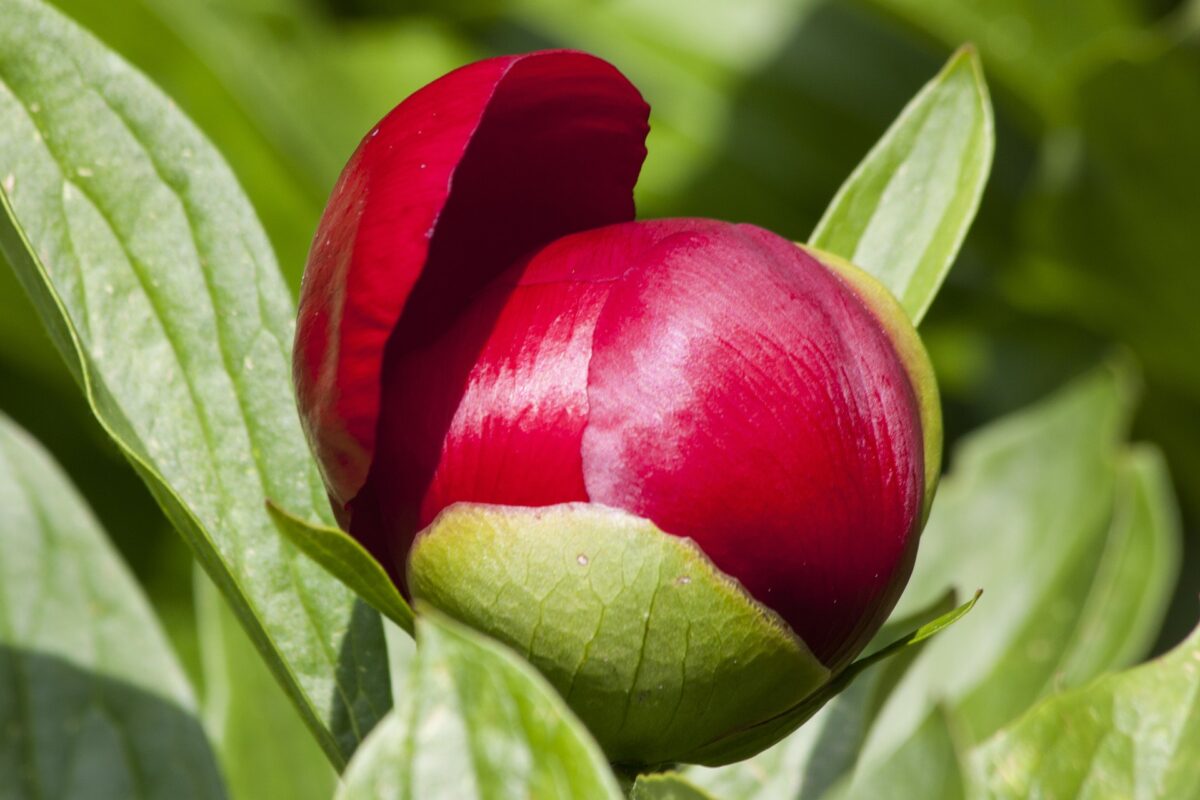
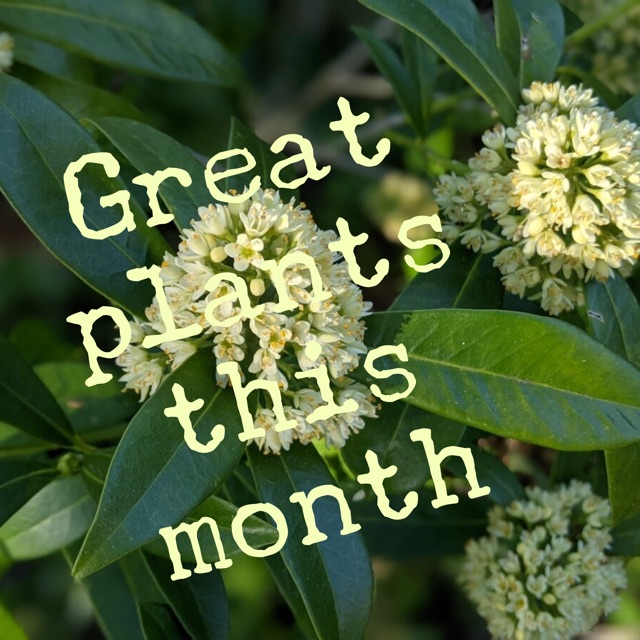
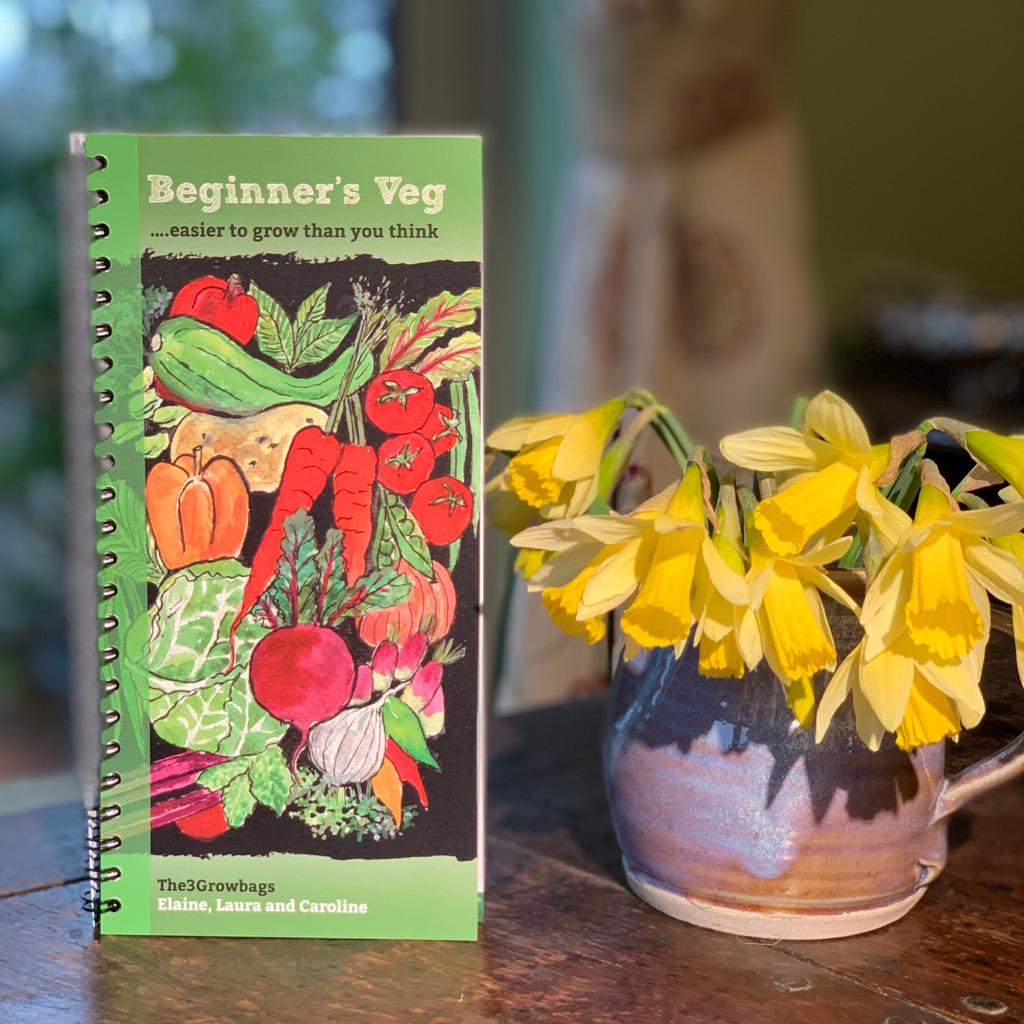
7 replies on “Peonies galore – but which one to choose?”
I’m going to dig out (notice the pun) my epsom salts for my roses. I wonder if they will produce more flowers or better colour.
Hi Linda, Elaine here. Yes, I think quite a lot of us are going to have a go with this, this year, and watch the results closely. If it cuts down their likelihood of getting blackspot later on in the summer, I will be well-pleased – anything else will be a huge bonus!
Dear Growbags, I have carefully written down (in my growbags notebook!) Martin Duncan’s recipe with Epsom salts for the roses. HOWEVER there appear to be two ways of applying it. One of says says water it in, the other refers to a foliage feed. Which is it, or can I do both???
Best wishes Maggie
Hi Maggie, well-spotted! Elaine here, and I did indeed mention Epsom salts as a foliar feed in last week’s Growhow column; that’s because I had heard Martin Duncan mentioning them during our tour of Arundel Castle so I looked them up online and that seemed to be the usual method of using them. Having since asked Martin directly, he advised drenching the roots with the solution instead. Frankly, I would definitely go with Martin’s advice for use, because his roses looked in stupendous form!
Thanks Elaine. I will certainly do this.
Hello. I have been using Uncle Tom’s Rose tonic, as a spray, as well as Westland Rose Food. Should I also use the Epsom salts, or am I to overkill if I do. Thanks
Hi Patricia, Elaine here. Yes, well that does sound rather like over-egging the rose-food pudding! The roses in your garden are obviously already having a lovely pampered time – I bet they are fabulous! – so I would hold fire on the Epsom salts, unless you are convinced that the other treatments are not having the desired effect. Enjoy your rose-filled summer!